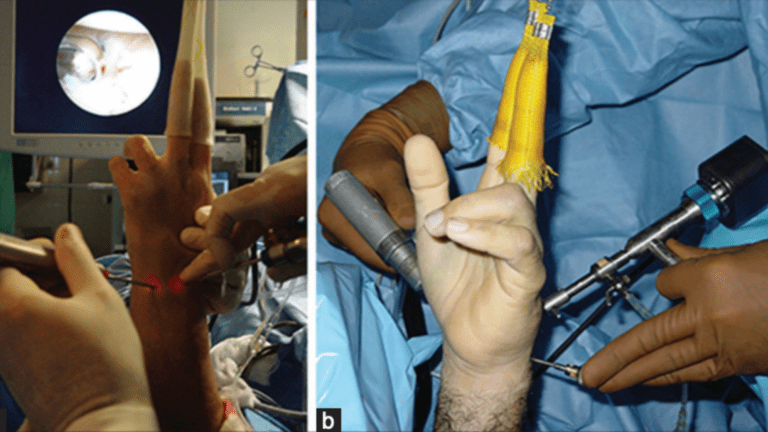Article in Indian Journal of Orthopaedics · March 2013
Many studies in literature have supported the role of wrist arthroscopy as an adjunct to the stable fixation of unstable intraarticular distal radial fractures. This article focuses on the surgical technique, indications, advantages, and results using wrist arthroscopy to assess articular reduction and evaluates the treatment of carpal ligament injuries and triangular fibrocartilage complex (TFCC) injuries in conjunction with the stable fixation of distal radial fractures. We retrospectively evaluated 27 patients (16 males and 11 females), who underwent stable fixation of intraarticular distal radial fractures with arthroscopic evaluation of the articular reduction and repair of associated carpal injuries. As per the AO classification, they were 9 C 1, 12 C2, 2 C3, 3 B 1, and 1 B2 fractures. The final results were evaluated by modified Mayo wrist scoring system. The average age was 41 years (range: 18-68 years). The average followup was of 26 months (range 24-52 months). Five patients needed modification of the reduction and fixation after arthroscopic joint evaluation. Associated ligament lesions found during the wrist arthroscopy were TFCC tears (n=17), scapholunate ligament injury (n=8), and luno-triquetral ligament injury (n=1). Five patients had combined injuries i.e. included TFCC tear, scapholunate and/or lunotriquetral ligament tear. There were 20 excellent, 3 good, and 4 fair results using this score. The radiocarpal and mid carpal arthroscopy is a useful adjunct to stable fixation of distal radial fractures.


Cite this article: Khanchandani P, Badia A. Functional outcome of arthroscopic assisted fixation of distal radius fractures.Indian J Orthop 2013;47:288-94.

Monday- Friday: 8:30AM- 5:00 PM
Saturday- Sunday: Closed